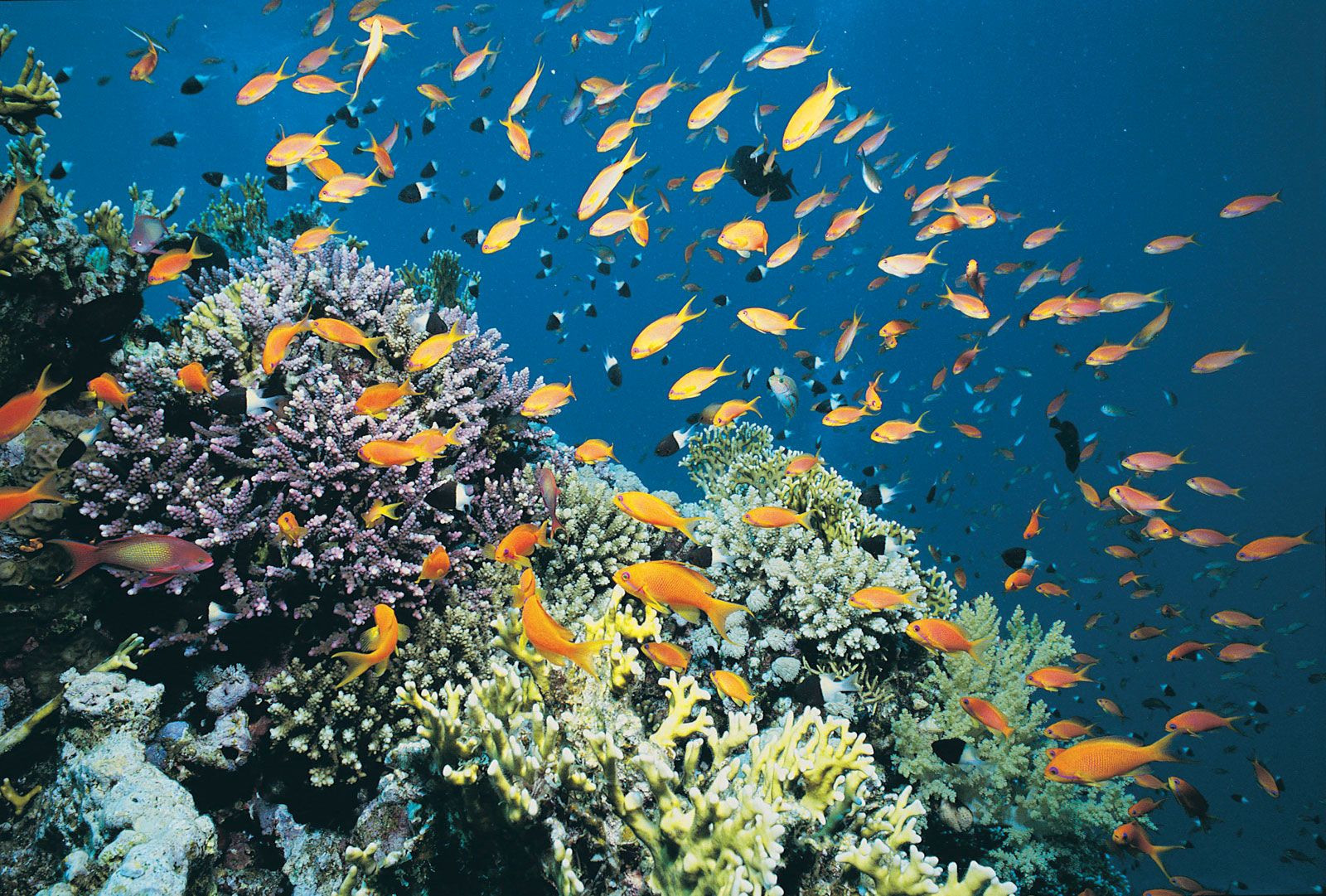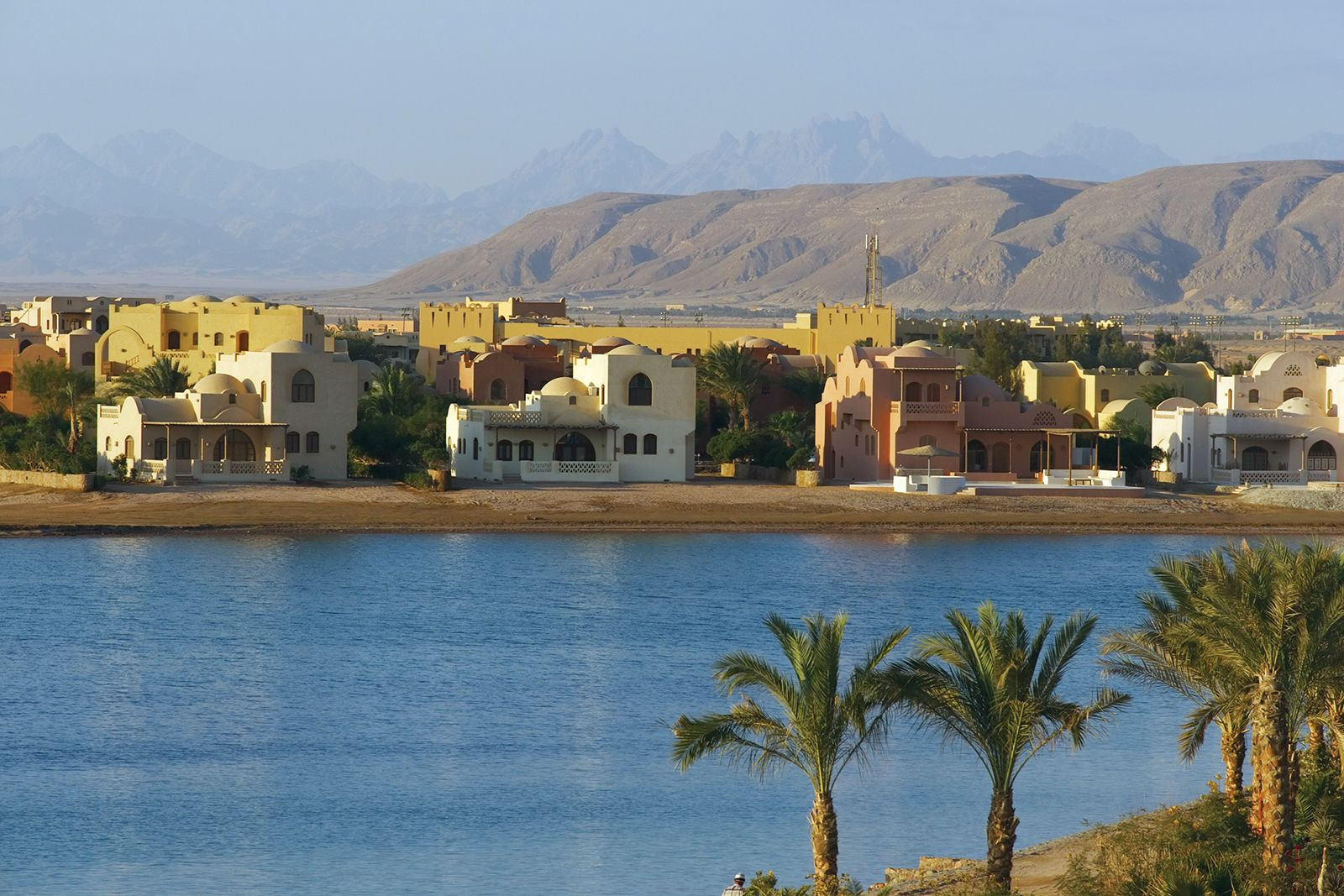The Red Sea is a fascinating and geographically significant body of water. But Where Is The Red Sea Located exactly? This article will explore the precise location of this remarkable sea, delving into its physical features, geological origins, climate, and hydrological characteristics to provide a comprehensive understanding of its unique environment.
Physiography and Submarine Morphology
The Red Sea is situated in a fault depression, a geological rift that distinctly separates the continents of Africa and Asia. More specifically, it lies between Arabia and North Africa. To visualize its location, imagine a long, narrow sea bordered by countries with rich histories and diverse landscapes. On the western side, the African coast is formed by Egypt, Sudan, Eritrea, and Djibouti. To the east, the Arabian Peninsula hosts Saudi Arabia and Yemen. At its northernmost extent, the Red Sea forks into two significant branches: the Gulf of Suez to the northwest and the Gulf of Aqaba to the northeast, further defining its geographical context. The land surrounding the Red Sea rises sharply from the coastal plains, reaching elevations of over 6,560 feet, particularly in the southern regions, emphasizing its dramatic topographical setting.
The Gulf of Suez, in contrast to the Gulf of Aqaba, is relatively shallow, with depths ranging from 180 to 210 feet, and is characterized by a wide coastal plain. The Gulf of Aqaba, however, is much deeper, plunging to depths of 5,500 feet and bordered by a narrow coastal strip. From approximately 28° N latitude, where these two gulfs converge, southward to around 25° N, the Red Sea maintains a roughly parallel coastline on both sides, separated by about 100 miles. The seabed in this central section features a main trough reaching depths of approximately 4,000 feet, running parallel to the coastlines.
Moving south from 25° N to 16° N latitude, the main trough of the Red Sea takes on a more winding form, mirroring the irregular shape of the shoreline. Around the latitudes of 20° to 21° N, the seafloor becomes notably rugged, marked by steep clefts. South of 16° N, extensive coral reef growth significantly reduces the navigable channel, leaving only a shallow and narrow passage. This coral proliferation also impacts the sill, a submarine ridge at the Bab el-Mandeb Strait that connects the Red Sea to the Gulf of Aden, restricting water depth to about 380 feet and narrowing the main channel. Within the deeper trough, unique clefts are found, notable for their hot brine concentrations and heavy metal oxide deposits, adding to the Red Sea’s distinctive submarine landscape.
Geology
Geologically, the Red Sea occupies a crucial part of a vast rift valley within the Earth’s continental crust, situated at the junction of Africa and Arabia. This rift is part of a larger, complex system that includes the East African Rift System, extending thousands of miles through East Africa, and the Wadi Aqaba–Dead Sea–Jordan Rift to the north. Eastward, the rift system stretches to form the Gulf of Aden, highlighting the Red Sea’s position within a major global geological feature.
The Red Sea valley carves through the Arabian-Nubian Massif, an ancient geological shield composed of Precambrian igneous and metamorphic rocks, forming the rugged mountains that characterize the adjacent regions. This massif, dating back over 540 million years, is surrounded by Precambrian rocks overlaid with Paleozoic marine sediments (542 to 251 million years old). These layers of sediments, and those of the Mesozoic Era (251 to 65.5 million years ago) and early Cenozoic sediments (65.5 to 55.8 million years old), indicate a long and complex geological history of deposition and tectonic activity. The presence of Mesozoic sediment remnants atop Precambrian rocks suggests a once continuous sedimentary cover over the older massif, eroded over time.
The Red Sea is considered a geologically young sea, with its formation process mirroring the early stages of the Atlantic Ocean’s development. The Red Sea trough formation occurred in at least two phases of significant land movement. The separation of Africa from Arabia commenced approximately 55 million years ago. The Gulf of Suez began to open around 30 million years ago, followed by the northern Red Sea about 20 million years ago. A second phase of rifting, starting roughly 3 to 4 million years ago, created the trough in the Gulf of Aqaba and the southern Red Sea valley. This ongoing tectonic movement, estimated at about 0.59 to 0.62 inches per year, is evidenced by recent volcanic activity, seismic events, and the hot brine flows within the trough, indicating a sea that is still actively evolving geologically.
Climate
The climate of the Red Sea region is characterized by very low precipitation throughout the year. While historical evidence suggests periods of higher rainfall, the present climate is arid. The region is generally favorable for outdoor activities during fall, winter, and spring, with temperatures ranging from 46 to 82 °F (8 to 28 °C), excluding periods of windstorms. Summers, however, are intensely hot, with temperatures reaching up to 104 °F (40 °C), combined with high relative humidity, making strenuous activity uncomfortable.
Wind patterns in the Red Sea area vary geographically. In the northern part, extending to about 19° N, winds predominantly blow from the north to northwest. Notable are the occasional “Egyptian” westerly winds, which can be strong during winter, often accompanied by fog and sandstorms. Between 14° to 16° N latitude, winds are more variable. From June to August, strong northwest winds prevail, sometimes reaching as far south as the Bab el-Mandeb Strait, before retreating north of 16° N by September. South of 14° N, the prevailing winds shift to a south to southeast direction, influencing weather patterns and sea conditions in different parts of the Red Sea.
Hydrology
Hydrologically, the Red Sea is unique due to the absence of river inflow and minimal rainfall. Despite this, and facing high evaporation rates exceeding 80 inches annually, the sea’s water balance is maintained by inflow from the Gulf of Aden through the eastern channel of the Bab el-Mandeb Strait. This inflow, driven northward by prevailing winds, establishes a circulation pattern where lower-salinity waters (average salinity around 36 parts per thousand) move northwards. Water from the Gulf of Suez, due to higher evaporation, has a higher salinity of about 40 parts per thousand and thus greater density. This denser water moves southward and sinks below the less dense inflowing Red Sea waters.
Below a transition zone, between depths of 300 to 1,300 feet, water conditions stabilize at around 72 °F (22 °C) with a salinity of nearly 41 parts per thousand. This south-flowing bottom water, originating from the north, eventually spills over the sill at Bab el-Mandeb, primarily through the eastern channel. It is estimated that the entire water volume of the Red Sea is renewed approximately every 20 years through this exchange.
In the deepest parts of the trough, below this southward flow, another transition layer exists, about 80 feet thick, beneath which, at depths around 6,400 feet, are pools of hot brine. The brine in the Atlantis II Deep, for example, has an average temperature near 140 °F (60 °C), an extremely high salinity of 257 parts per thousand, and is devoid of oxygen. Similar brine pools are found in the Discovery Deep and Chain Deep. Heat from below makes these pools unstable, causing their contents to mix with the overlying waters and become part of the sea’s overall circulation system.
In conclusion, the Red Sea is located in a geographically critical and fascinating area, nestled between Africa and Asia. Its unique physical features, geological history, climate, and hydrology combine to create a distinctive marine environment that continues to intrigue scientists and captivate those who explore its shores and waters.


 Coastal view of El Gouna, Egypt, a popular tourist destination on the Red Sea, illustrating the region's appeal and accessibility.
Coastal view of El Gouna, Egypt, a popular tourist destination on the Red Sea, illustrating the region's appeal and accessibility.